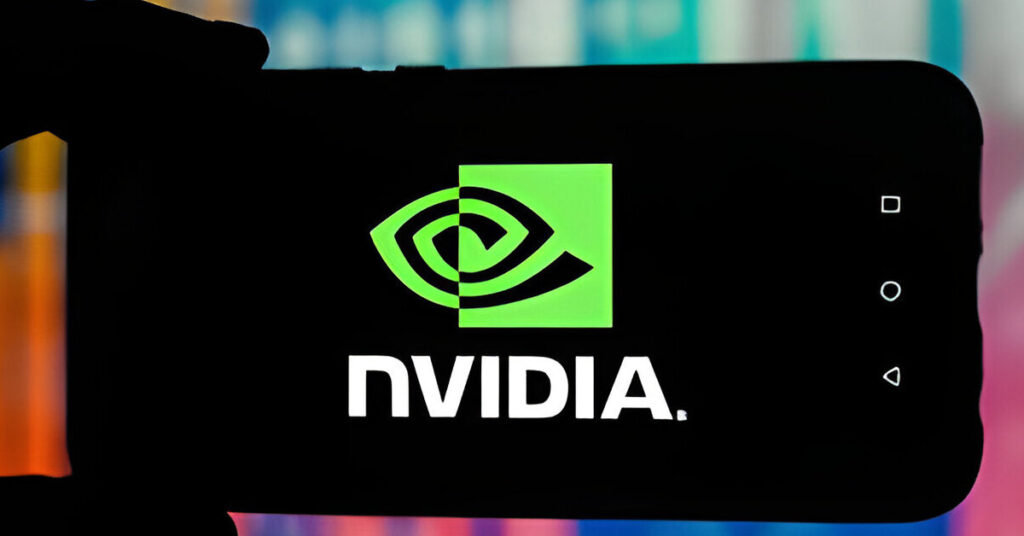Nvidia10-for-1 Split: Buy Now or Wait?
Don’t look now, but Nvidia(NASDAQ: NVDA) stock is soaring again.
Shares of the leading AI chip maker are getting another boost after a strong first-quarter earnings report on May 22 and the surprise announcement of a Nvidia10-for-1 stock split.
Before the earnings report, there were signs that Nvidia’s AI stock might have reached its peak. Billionaire investors like Stanley Druckenmiller, who made gains from the earlier surge in Nvidia shares, started selling, saying the stock’s best days were over.
In April, Nvidia shares dropped significantly, falling 10% on April 19 due to a general fear among AI stocks, which led to widespread selling. This made some people think that the AI sector might be experiencing a bubble that was starting to burst.
When does the Nvidia stock split happen?
However, investors who held through the volatility were rewarded when Nvidia’s stock soared after its recent earnings report. The stock jumped 9.3% on May 23 and gained another 11% in the following days as the company beat estimates, showed strong momentum, and announced a stock split set for June 10.
With the Nvidia10-for-1 split approaching, a key question arises for those who don’t already own the stock or are thinking of buying more: Should you buy Nvidia stock before the split?
What the stock split means for Nvidia
A stock split may sound exciting, but it’s important to grasp what it really means for Nvidia’s stock before diving in. Essentially, a stock split doesn’t alter the company’s fundamentals. It’s like cutting a pie into smaller slices – investors end up with more shares, but each share is worth proportionally less. In Nvidia’s case, investors will have ten times more shares, but each share will only be worth a fraction of its pre-split value.
A stock split indicates growth and piques investor interest, but it has little effect on a company’s essential business operations. This milestone could thrill investors since it symbolizes the company’s management’s trust in the business. By lowering the price of shares for individual investors, the split may increase demand and increase the number of shareholders. It has no effect on the actual value of the company, but it might have a beneficial psychological effect by making the stock market seem more accessible and growing.
Read More: NASA Finds Possibly Habitable Exoplanet 40 Light Years Away
While a stock split doesn’t change the company’s worth, it often sparks positive attention in the market. It’s seen as a milestone of growth and can reignite interest in the stock. Additionally, a split can make high-priced stocks like Nvidia more accessible to smaller investors, potentially drawing in more buyers.
Moreover, stocks that split have historically outperformed the S&P 500 in the year following the split, according to research. However, this isn’t a guaranteed outcome, as some companies see their share prices drop post-split.
In the case of Nvidia, the split could also pave the way for its inclusion in indices like the Dow Jones Industrial Average, as its current high price makes it ineligible. Overall, while the split may boost Nvidia’s stock temporarily, it’s crucial for investors to weigh the long-term implications before making any decisions.
Should you buy Nvidia stock before the split?
A number of considerations must be taken into account when investing in equities, and the decision-making process will become even more difficult in light of Nvidia’s upcoming stock split. Even while it’s challenging to forecast short-term changes in stock prices, knowing the bigger picture may help investors make wise choices.
Let’s start by analyzing the implications of a stock split for Nvidia and its investors. In essence, a stock split is the partition of current shares into numerous shares, increasing the total number of outstanding shares while decreasing the value of each share proportionately. In the case of Nvidia, the impending split will result in stockholders receiving additional shares for each share they presently possess, but each share would lose value as a whole. This has no effect on the company’s fundamentals or overall worth; rather, it simply adjusts the number of shares available in the market.
Let’s now discuss the stock of Nvidia’s recent performance and the possible effects of the split. Prior to the announcement of the split, Nvidia’s share price saw a notable increase. An occurrence described to be a “sell-the-news” event can occasionally result from such quick price increase, when investors who purchased shares anticipating the split may choose to sell after the split takes place. This can cause Nvidia’s stock price to fluctuate in the near term after the split.
Nvidia has continuously shown great growth and performance, particularly in the semiconductor business, in spite of the short-term concerns. The business consistently beats Wall Street’s projections, releasing strong revenue and profit figures on a quarterly basis. Furthermore, Nvidia’s leadership in important markets—like data center GPUs—remains unopposed as the business keeps coming up with new ideas and growing its product line.
Nvidia’s supremacy in artificial intelligence (AI) technology is one of its main advantages. The CEO of the firm, Jensen Huang, has presented an engaging picture of an AI-powered future in which Nvidia will be a key enabler of this shift. The notion put up by Huang regarding “AI factories,” which are sizable clusters devoted to AI inference and training, has struck a chord with both industry professionals and investors. With this cutting-edge strategy, Nvidia distinguishes itself from its rivals and assumes a leading role in the AI industry.
Moreover, Nvidia’s strategic alliances and joint ventures with prominent IT firms such as Tesla and Meta Platforms (formerly Facebook) reinforce its market standing. These alliances promote Nvidia’s expertise and technologies while also helping to increase income.
Considering these elements, purchasing Nvidia stock prior to the split may be viewed as a calculated decision. Nvidia may see some volatility in the near future, but its long-term growth prospects seem bright. The firm is positioned for future success based on its outstanding financial performance, sustained innovation, and leadership in important areas.
It’s crucial to remember that stock investing involves dangers, therefore before making any decisions about their money, individual investors should do extensive study and assess their personal risk tolerance. Furthermore, consulting financial advisors or other subject-matter specialists can yield insightful suggestions.
In conclusion, long-term investors may find Nvidia to be a compelling investment because to its solid fundamentals and dominant position in important markets, even though the short-term effects of the company’s stock split are unclear.



